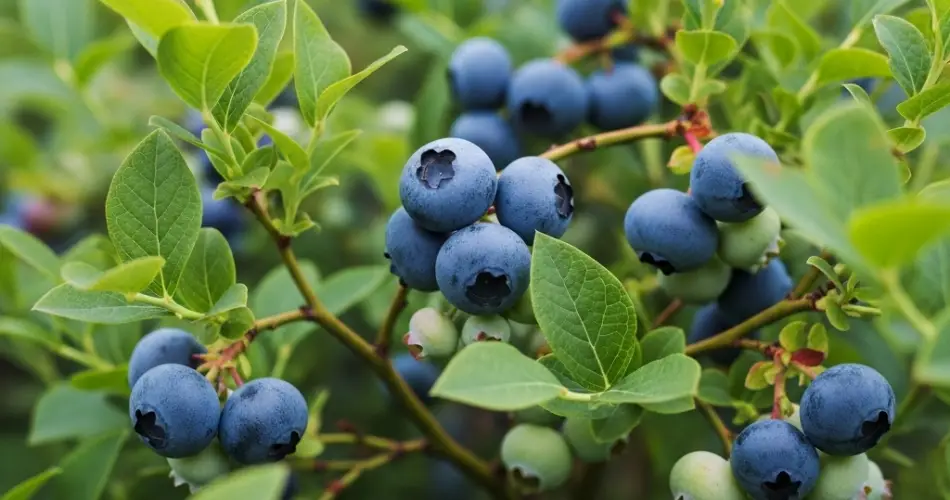Blueberries are a delicious, nutrient-packed fruit that many home gardeners love to grow. While blueberry plants can produce fruit with minimal care, achieving high yields naturally requires thoughtful attention to soil, pollination, pruning, and overall plant health. With the right organic methods, you can significantly boost your blueberry harvest season after season without relying on synthetic fertilizers or chemicals.
Here’s a comprehensive guide on how to naturally increase your blueberry yield.
1. Start with the Right Variety
Choosing the right blueberry variety for your region is the first step to a productive harvest. There are three main types:
-
Highbush (best for temperate climates)
-
Lowbush (ideal for cold, northern areas)
-
Rabbiteye (suitable for warmer southern regions)
Make sure to plant varieties that are suited to your local climate and soil conditions. Also, mix two or more compatible varieties to improve cross-pollination, which leads to bigger and more abundant berries.
2. Improve Soil Acidity
Blueberries thrive in acidic soil with a pH between 4.5 and 5.5. If the soil is too alkaline, the plant struggles to absorb nutrients, resulting in poor growth and fewer berries. To naturally lower soil pH:
-
Mix pine needles, peat moss, or composted oak leaves into the planting area.
-
Use elemental sulfur or coffee grounds sparingly as amendments.
-
Apply organic mulch like pine bark, which breaks down slowly and helps maintain acidity.
Regularly test your soil pH using a home kit or have it tested through a local extension service. Adjust as needed to keep it within the ideal range.
3. Add Organic Matter
Rich, well-drained soil full of organic matter is essential for strong root development and fruit production. Blueberries have shallow roots and prefer consistently moist, well-aerated soil. To naturally improve soil structure:
-
Add composted leaf mold, well-rotted manure, or worm castings around the base of the plants.
-
Mulch with wood chips, sawdust, or pine bark to retain moisture and feed the soil as they break down.
-
Avoid over-fertilizing, as too much nitrogen can lead to lush foliage at the expense of fruit.
4. Mulch Generously
Mulching not only conserves soil moisture but also suppresses weeds and supports soil health. Organic mulches like pine bark, wood shavings, or straw provide the slow release of nutrients and help maintain acidic conditions.
Apply a thick layer (about 2–4 inches) around each plant, keeping it a few inches away from the main stem to prevent rot. Refresh mulch as needed, especially in spring before flowering begins.
5. Ensure Proper Pollination
Blueberries are partially self-fertile, but cross-pollination between different varieties greatly improves fruit size and quantity. To encourage better pollination naturally:
-
Plant at least two compatible varieties close together.
-
Attract pollinators like bees by growing nearby flowering plants such as borage, lavender, clover, or echinacea.
-
Avoid using pesticides during flowering season, as they can harm beneficial insects.
If you’re growing in a greenhouse or your garden has limited pollinator activity, consider hand-pollinating using a small brush to transfer pollen from one flower to another.
6. Prune for Productivity
Pruning is essential to keeping your blueberry plants healthy and productive. Regular pruning encourages new growth, better airflow, and more fruiting wood. Here’s how to prune naturally and effectively:
-
In late winter or early spring, remove dead, damaged, or crossing branches.
-
Thin out older canes (more than 6 years old) to allow light into the plant’s center.
-
Cut back weak or spindly shoots to encourage stronger new growth.
Focus on maintaining a balanced shape and a good mix of young and mature canes. A well-pruned plant yields more and larger berries.
7. Water Consistently
Blueberries need consistent moisture, especially during fruit set and ripening. Irregular watering can lead to small or shriveled berries. Water deeply once or twice a week, depending on your climate and soil type. Use drip irrigation or soaker hoses to keep the foliage dry and reduce the risk of disease.
Apply mulch to retain moisture and reduce the need for frequent watering during dry periods.
8. Feed with Natural Fertilizers
Feed your blueberries organically to boost fruit production. Use fertilizers high in phosphorus and potassium but low in nitrogen to promote flowering and fruiting.
Good natural fertilizers include:
-
Fish emulsion – a mild, balanced liquid feed
-
Compost tea – enriches the soil and strengthens plant immunity
-
Bone meal – rich in phosphorus for flowering
-
Kelp meal – contains micronutrients that improve overall plant health
Feed in early spring as buds swell, and again after harvest to help plants recover and prepare for next year.
9. Protect from Birds Naturally
Birds love ripe blueberries as much as we do, and if unprotected, they can reduce your yield significantly. To protect your harvest naturally:
-
Use bird netting over plants once the berries begin to ripen.
-
Hang shiny objects, such as old CDs or foil strips, to deter birds.
-
Consider installing a scarecrow or motion-activated garden spinner.
These methods reduce the need for harmful deterrents and help ensure more berries reach your harvest basket.
Final Thoughts
Increasing blueberry yields naturally is all about building a healthy environment where your plants can thrive. Focus on acidic, nutrient-rich soil, proper pruning, good pollination, and organic feeding practices. With patience and care, you’ll enjoy a more abundant harvest of delicious, sweet blueberries—grown the natural way.



